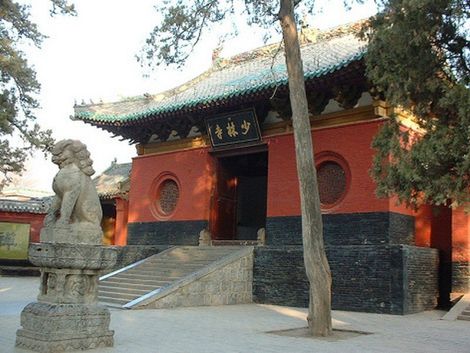History of Tao Chan Wing Chun
The Wing Chun style was created over 350 years ago in the famous South Shaolin Monastery in China and is the highest secret style of the Shaolin monks. The South Shaolin Monastery no longer exists today.
Founder of the Wing Chun was abbess Ng Mui, which learned the basics of Wing Chun, however, from the Shaolin abbot Chi Sim, which story unfortunately is missing in the versions of most styles of the Ip Man Wing Chun lineage.
After the temple was destroyed, the monks fled into the underground and hid themselves. Since the abbess Ng Mui had to face battles with attackers, who all mastered Shaolin Kung Fu and were also much younger than herself, she developed a system that is superior to the usual Shaolin Kung Fu. All techniques have been optimized for practice and combat, not for good appearance. Ng Mui eventually defeated all attackers with the new system.
On her travels, she met a young girl named Yim Wing Chun, who was molested by a local thug. The nun took pity on Yim Wing Chun and taught her the new system. Yim Wing Chun was thus able to beat the man and became a famous fighter and was never defeated.
Her husband, to whom she later taught her system, eventually named the style after his wife.
Contrary to the widespread FALSE assumption, Wing Chun translates into English not as "beautiful spring" or "eternal spring", but "ode to spring". This is because the Chinese symbols for Eternity and Ode are very similar, which today is used by most Wing Chun teachers who are often unaware of Chinese and using the wrong translation.
For generations, the system, which as a secret style was only passed on to one successor, was forwarded to Dr. Leung Jan, a famous Chinese doctor, who remained undefeated as King of Kung Fu. Through his successor Chan Wah Shun and his son Leung Bik, the system came to Grandmaster Ip Man, who taught the system for the first time publicly and had as famous students as Bruce Lee.
Before his death, he passed the system on to his son Grandmaster Ip Chun, from whom Venerable Chi Sim learned.
Over time, Venerable Chi Sim recognized the deep Chan Buddhist content of Wing Chun, which points to the forgotten style of the "Eternal Spring" and united for the first time in 350 years after the destruction of South Shaolin - under the same name of the last abbot Chi Sim of the South Shaolin Monastery under which the monk lineage in Wing Chun became extinct - with Chan Buddhism dating back to Shaolin and founded the Tao Chan Wing Chun, which follows the mission to protect the values of Shaolin Chan in Eternal Spring, which even in Hong Kong have been lost.
Tao Chan Wing Chun is an extremely effective system for self-defence and health. Since it does not require any muscle power, smaller and weaker people can handle larger people without any problems and, in addition, the student can do something for his/her own health.
It is therefore also very suitable for women and smaller persons and requires neither big muscles nor acrobatic skills.
Ip Man Wing Chun consists of 6 forms, of which the last and highest and include 2 types of weapons:
1) 1st form: Siu Nim Tao, excluding arm and hand movements
2) 2nd form: Cham Kiu, includes also kicks and turns
3) 3rd form: Biu Tze, includes also ellbow punches and finger strikes
4) Wooden Dummy form, 116 different movements
at the Chinese Wooden Dummy
5) Long Pole form, originally inherit from Shaolin Kung Fu
6) Baat Cham Dao form, with 2 Wing Chun double knives
Tao Chan Wing Chun, since it is completely identical with the Ip Man Wing Chun regarding the mentioned forms, has been extended and improved by the following forms & exercises due to the practice of Shaolin Chan in the master and grand master levels:
4th form of Wing Chun
Tao Chan Armor form
Siu Dei Dao
Chi Dei
Extended Long Pole form
Siu Bat Cham Dao
Tao Chan forms

Photo of the Northern Shaolin monastery in Henan, China





